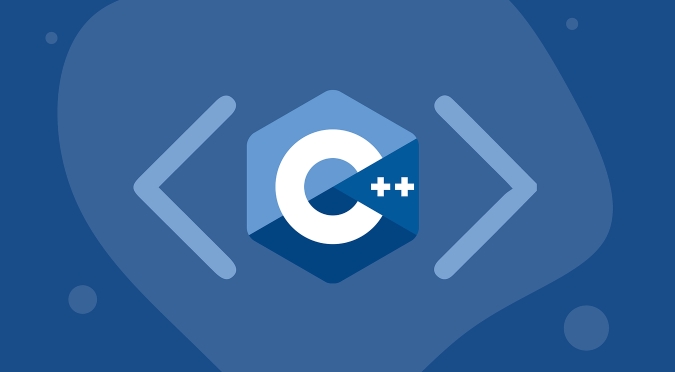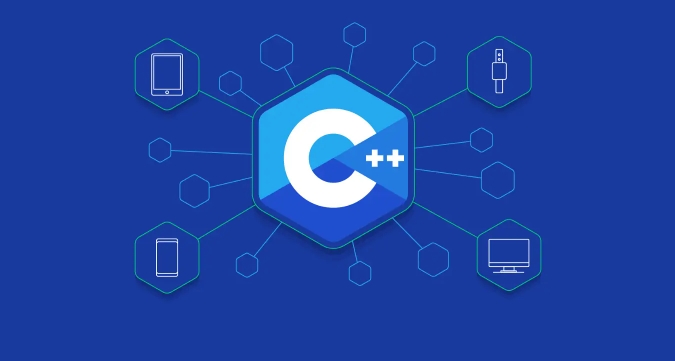Use C's std::map to store key-value pairs to master its automatic sorting and efficient search characteristics, initialize such as std::map<:string int> student_scores; insert the available insert or [] operator, 1. insert does not replace the existing key, but 2. [] will overwrite; iterate through the available iterator or range for loop, 3. It is recommended to use find to obtain the iterator; modify it directly to assign the value to delete the available erase key or iterator; note that map is arranged in ascending order by default, and the performance is O(log n). If there is no need for order, you can consider std::unordered_map.

Using C's std::map to store key-value pairs is actually quite intuitive. The key is to understand its automatic sorting and efficient features. As long as you master the basic operations, it will be easy to use in daily development.

Initialize and insert data
Declaring a map is very simple. For example, if you want to save the correspondence between student names and grades, you can write it like this:

std::map<std::string, int> student_scores;
There are several ways to insert data:
Use
insertmethod:
student_scores.insert(std::make_pair("Alice", 90));Or use the
[]operator directly:student_scores["Bob"] = 85;
Note that if the key already exists, [] will overwrite the old value; insert will not replace it.
Traversal and find elements
To traverse maps, it is generally used to use iterators or range for loops:
for (const auto& pair : student_scores) {
std::cout << pair.first << ": " << pair.second << std::endl;
} To find out whether a key exists, you can use find :
if (student_scores.find("Charlie") != student_scores.end()) {
// Found} else {
// Not found} This method is more recommended than count , because the returned iterator can be used directly to access the value.
Modify and delete elements
Modifying the value is very simple, just assign the value directly through [] :
student_scores["Alice"] = 95;
Use erase to delete a specific element:
student_scores.erase("Bob");You can also pass in an iterator to delete elements at a certain location:
auto it = student_scores.find("Alice");
if (it != student_scores.end()) {
student_scores.erase(it);
}Common precautions
- map is an ordered structure , and the default is arranged in ascending order.
- The insertion and search efficiency are relatively high, and it is O(log n).
- If you don't care about order and only focus on performance, consider
std::unordered_map.
Basically that's it. If you use it too much, you will find that it is particularly convenient when dealing with configuration, caching, statistics and other scenarios.
The above is the detailed content of How to use std::map in C ?. For more information, please follow other related articles on the PHP Chinese website!

Hot AI Tools

Undress AI Tool
Undress images for free

Undresser.AI Undress
AI-powered app for creating realistic nude photos

AI Clothes Remover
Online AI tool for removing clothes from photos.

Clothoff.io
AI clothes remover

Video Face Swap
Swap faces in any video effortlessly with our completely free AI face swap tool!

Hot Article

Hot Tools

Notepad++7.3.1
Easy-to-use and free code editor

SublimeText3 Chinese version
Chinese version, very easy to use

Zend Studio 13.0.1
Powerful PHP integrated development environment

Dreamweaver CS6
Visual web development tools

SublimeText3 Mac version
God-level code editing software (SublimeText3)

Hot Topics
 C Destructors code samples
Jun 13, 2025 am 12:04 AM
C Destructors code samples
Jun 13, 2025 am 12:04 AM
The destructor in C is used to free the resources occupied by the object. 1) They are automatically called at the end of the object's life cycle, such as leaving scope or using delete. 2) Resource management, exception security and performance optimization should be considered during design. 3) Avoid throwing exceptions in the destructor and use RAII mode to ensure resource release. 4) Define a virtual destructor in the base class to ensure that the derived class objects are properly destroyed. 5) Performance optimization can be achieved through object pools or smart pointers. 6) Keep the destructor thread safe and concise, and focus on resource release.
 C Polymorphism : is function overloading a kind of polymorphism?
Jun 20, 2025 am 12:05 AM
C Polymorphism : is function overloading a kind of polymorphism?
Jun 20, 2025 am 12:05 AM
Yes, function overloading is a polymorphic form in C, specifically compile-time polymorphism. 1. Function overload allows multiple functions with the same name but different parameter lists. 2. The compiler decides which function to call at compile time based on the provided parameters. 3. Unlike runtime polymorphism, function overloading has no extra overhead at runtime, and is simple to implement but less flexible.
 What Are the Different Kinds of Polymorphism in C ? Explained
Jun 20, 2025 am 12:08 AM
What Are the Different Kinds of Polymorphism in C ? Explained
Jun 20, 2025 am 12:08 AM
C has two main polymorphic types: compile-time polymorphism and run-time polymorphism. 1. Compilation-time polymorphism is implemented through function overloading and templates, providing high efficiency but may lead to code bloating. 2. Runtime polymorphism is implemented through virtual functions and inheritance, providing flexibility but performance overhead.
 How to Implement Polymorphism in C : A Step-by-Step Tutorial
Jun 14, 2025 am 12:02 AM
How to Implement Polymorphism in C : A Step-by-Step Tutorial
Jun 14, 2025 am 12:02 AM
Implementing polymorphism in C can be achieved through the following steps: 1) use inheritance and virtual functions, 2) define a base class containing virtual functions, 3) rewrite these virtual functions by derived classes, and 4) call these functions using base class pointers or references. Polymorphism allows different types of objects to be treated as objects of the same basis type, thereby improving code flexibility and maintainability.
 C : Is Polymorphism really useful?
Jun 20, 2025 am 12:01 AM
C : Is Polymorphism really useful?
Jun 20, 2025 am 12:01 AM
Yes, polymorphisms in C are very useful. 1) It provides flexibility to allow easy addition of new types; 2) promotes code reuse and reduces duplication; 3) simplifies maintenance, making the code easier to expand and adapt to changes. Despite performance and memory management challenges, its advantages are particularly significant in complex systems.
 C Destructors: Common Errors
Jun 20, 2025 am 12:12 AM
C Destructors: Common Errors
Jun 20, 2025 am 12:12 AM
C destructorscanleadtoseveralcommonerrors.Toavoidthem:1)Preventdoubledeletionbysettingpointerstonullptrorusingsmartpointers.2)Handleexceptionsindestructorsbycatchingandloggingthem.3)Usevirtualdestructorsinbaseclassesforproperpolymorphicdestruction.4
 Polymorphism in C : A Comprehensive Guide with Examples
Jun 21, 2025 am 12:11 AM
Polymorphism in C : A Comprehensive Guide with Examples
Jun 21, 2025 am 12:11 AM
Polymorphisms in C are divided into runtime polymorphisms and compile-time polymorphisms. 1. Runtime polymorphism is implemented through virtual functions, allowing the correct method to be called dynamically at runtime. 2. Compilation-time polymorphism is implemented through function overloading and templates, providing higher performance and flexibility.
 What Are the Various Forms of Polymorphism in C ?
Jun 20, 2025 am 12:21 AM
What Are the Various Forms of Polymorphism in C ?
Jun 20, 2025 am 12:21 AM
C polymorphismincludescompile-time,runtime,andtemplatepolymorphism.1)Compile-timepolymorphismusesfunctionandoperatoroverloadingforefficiency.2)Runtimepolymorphismemploysvirtualfunctionsforflexibility.3)Templatepolymorphismenablesgenericprogrammingfo







